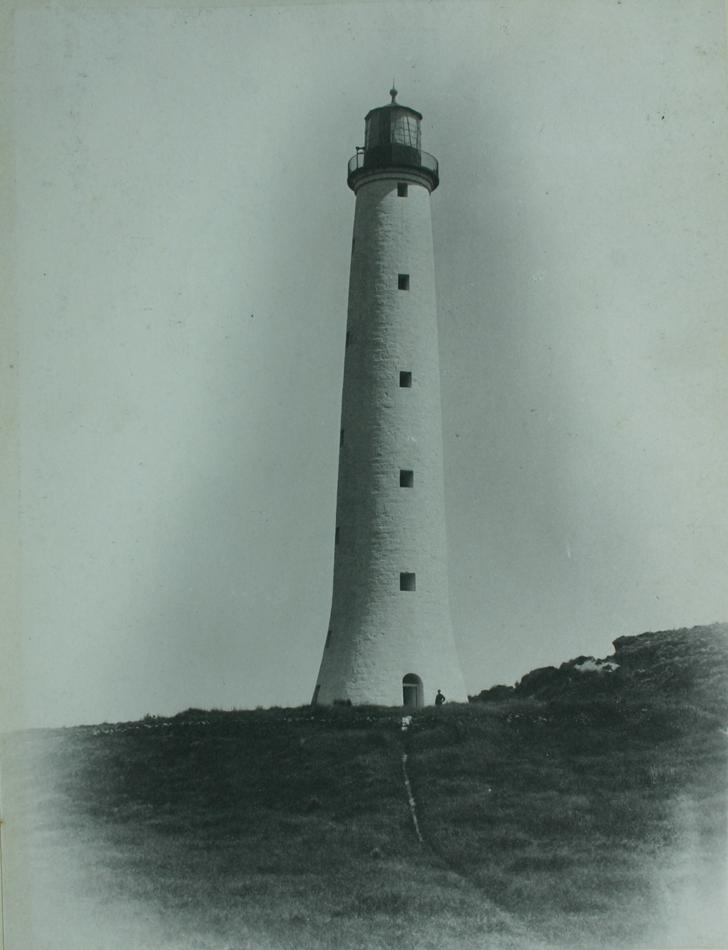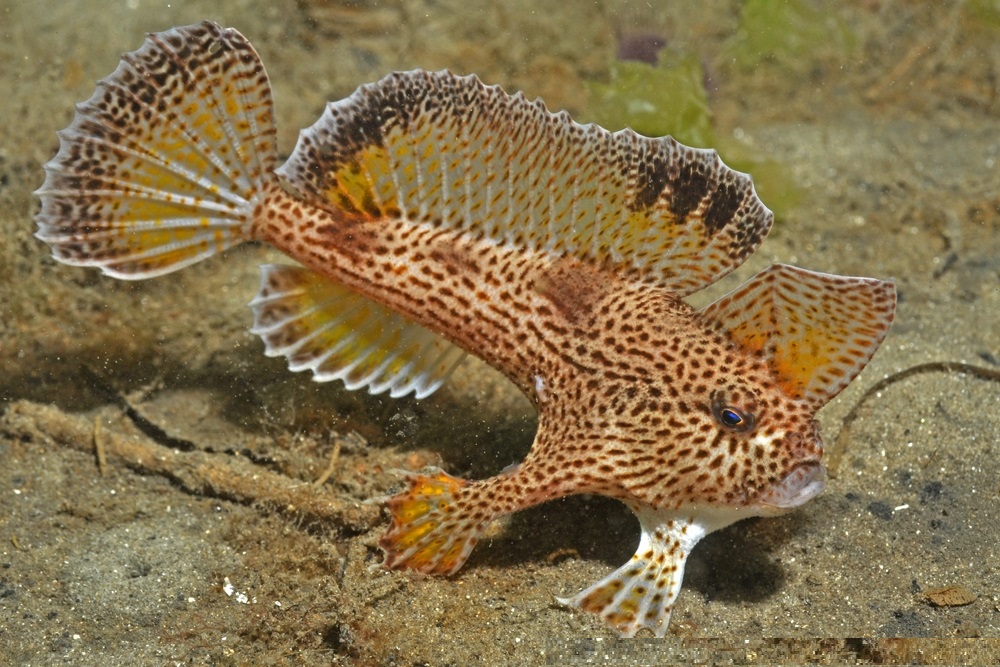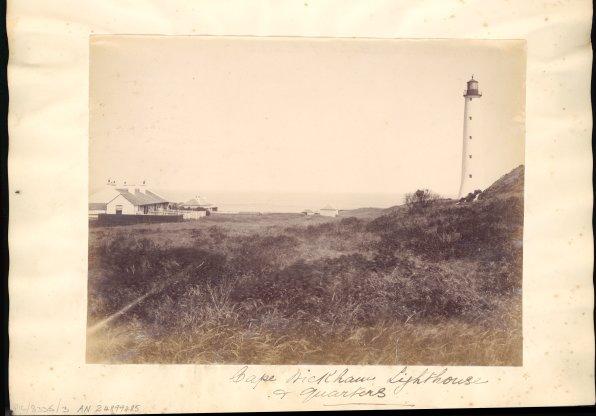|
King Island, Tasmania
King Island is an island in the Bass Strait, belonging to the Australian state of Tasmania. It is the largest of three islands known as the New Year Group, and the second-largest island in Bass Strait (after Flinders Island). The island's population at the was 1,585 people, up from 1,566 in 2011. The local government area of the island is the King Island Council. The island forms part of the official land divide between the Great Australian Bight and Bass Strait, off the north-western tip of Tasmania and about halfway to the mainland state of Victoria. The southernmost point is Stokes Point and the northernmost point is Cape Wickham. There are three small islands immediately offshore: New Year Island and Christmas Island situated to the northwest, and a smaller island Councillor Island to the east, opposite Sea Elephant Beach. King Island was first visited by Europeans in the late 18th century. It was named after Philip Gidley King, Colonial Governor of New South Wales, wh ... [...More Info...] [...Related Items...] OR: [Wikipedia] [Google] [Baidu] |
Tasmania
) , nickname = , image_map = Tasmania in Australia.svg , map_caption = Location of Tasmania in AustraliaCoordinates: , subdivision_type = Country , subdivision_name = Australia , established_title = Before federation , established_date = Colony of Tasmania , established_title2 = Federation , established_date2 = 1 January 1901 , named_for = Abel Tasman , demonym = , capital = Hobart , largest_city = capital , coordinates = , admin_center = 29 local government areas , admin_center_type = Administration , leader_title1 = Monarch , leader_name1 = Charles III , leader_title2 = Governor , leader_n ... [...More Info...] [...Related Items...] OR: [Wikipedia] [Google] [Baidu] |
Land Bridge
In biogeography, a land bridge is an isthmus or wider land connection between otherwise separate areas, over which animals and plants are able to cross and colonize new lands. A land bridge can be created by marine regression, in which sea levels fall, exposing shallow, previously submerged sections of continental shelf; or when new land is created by plate tectonics; or occasionally when the sea floor rises due to post-glacial rebound after an ice age. Prominent examples * Adam's Bridge (also known as Rama Setu), connecting India and Sri Lanka * The Bassian Plain, which linked Australia and Tasmania * The Bering Land Bridge (aka Beringia), which intermittently connected Alaska (Northern America) with Siberia (North Asia) as sea levels rose and fell under the effect of ice ages * East Asia’s former unnamed landmass, During the last Ice Age, which ended approximately 15,000 years ago, Japanese Archipelago was connected to the main continent through several land bridg ... [...More Info...] [...Related Items...] OR: [Wikipedia] [Google] [Baidu] |
Derwent River (Tasmania)
The River Derwent is a river located in Tasmania, Australia. It is also known by the palawa kani name timtumili minanya. The river rises in the state's Central Highlands at Lake St Clair, and descends more than over a distance of more than , flowing through Hobart, the state's capital city, before emptying into Storm Bay and flowing into the Tasman Sea. The banks of the Derwent were once covered by forests and occupied by Aboriginal Tasmanians. European settlers farmed the area and during the 20th century many dams were built on its tributaries for the generation of hydro-electricity. Agriculture, forestry, hydropower generation and fish hatcheries dominate catchment land use. The Derwent is also an important source of water for irrigation and water supply. Most of Hobart's water supply is taken from the lower River Derwent. Nearly 40% of Tasmania's population lives around the estuary's margins and the Derwent is widely used for recreation, boating, recreational fishing, m ... [...More Info...] [...Related Items...] OR: [Wikipedia] [Google] [Baidu] |
Port Jackson
Port Jackson, consisting of the waters of Sydney Harbour, Middle Harbour, North Harbour and the Lane Cove and Parramatta Rivers, is the ria or natural harbour of Sydney, New South Wales, Australia. The harbour is an inlet of the Tasman Sea (part of the South Pacific Ocean). It is the location of the Sydney Opera House and Sydney Harbour Bridge. The location of the first European settlement and colony on the Australian mainland, Port Jackson has continued to play a key role in the history and development of Sydney. Port Jackson, in the early days of the colony, was also used as a shorthand for Sydney and its environs. Thus, many botanists, see, e.g, Robert Brown's '' Prodromus Florae Novae Hollandiae et Insulae Van Diemen'', described their specimens as having been collected at Port Jackson. Many recreational events are based on or around the harbour itself, particularly Sydney New Year's Eve celebrations. The harbour is also the starting point of the Sydney to Hob ... [...More Info...] [...Related Items...] OR: [Wikipedia] [Google] [Baidu] |
Nicolas Baudin
Nicolas Thomas Baudin (; 17 February 1754 – 16 September 1803) was a French explorer, cartographer, naturalist and hydrographer, most notable for his explorations in Australia and the southern Pacific. Biography Early career Born a commoner in Saint-Martin-de-Ré on the Île de Ré on 17 February 1754, Nicolas Baudin joined the merchant navy as an apprentice (''pilotin'') at the age of 15; he was then "of average height with brown hair". He then joined the French East India Company at the age of 20 on ''Flamand''. He returned from India on ''L'Étoile'' and arrived at Lorient. At the beginning of 1778, he was to set sail from Nantes on ''Lion'' as second lieutenant. It was a ship equipped by his uncle, Jean Peltier Dudoyer, at the request of the Americans, which would become a privateer and be renamed ''Deane''. At first the Minister for the Navy was against it, but he finally changed his mind and authorised the departure, as France had signed a treaty with the United ... [...More Info...] [...Related Items...] OR: [Wikipedia] [Google] [Baidu] |
Southern Elephant Seal
The southern elephant seal (''Mirounga leonina'') is one of two species of elephant seals. It is the largest member of the clade Pinnipedia and the order Carnivora, as well as the largest extant marine mammal that is not a cetacean. It gets its name from its massive size and the large proboscis of the adult male, which is used to produce very loud roars, especially during the breeding season. A bull southern elephant seal is about 40% heavier than a male northern elephant seal (''Mirounga angustirostris''), twice as heavy as a male walrus (''Odobenus rosmarus''), and 6–7 times heavier than the largest living mostly-terrestrial carnivoran, the polar bear (''Ursus maritimus'') and the Kodiak bear (''Ursus arctos middendorffi''),. Taxonomy The southern elephant seal was one of the many species originally described by Swedish zoologist Carl Linnaeus in the landmark 1758 10th edition of his ''Systema Naturae'', where it was given the binomial name of ''Phoca leonina''. John Ed ... [...More Info...] [...Related Items...] OR: [Wikipedia] [Google] [Baidu] |
Fur Seal
Fur seals are any of nine species of pinnipeds belonging to the subfamily Arctocephalinae in the family ''Otariidae''. They are much more closely related to sea lions than Earless seal, true seals, and share with them external ears (pinnae), relatively long and muscular foreflippers, and the ability to walk on all fours. They are marked by their dense pelage, underfur, which made them a long-time object of commercial Seal hunting, hunting. Eight species belong to the genus ''Arctocephalus'' and are found primarily in the Southern Hemisphere, while a ninth species also sometimes called fur seal, the Northern fur seal (''Callorhinus ursinus''), belongs to a different genus and inhabits the North Pacific. The fur seals in ''Arctocephalus'' are more closely related to sea lions than they are to the Northern fur seal, but all three groups are more closely related to each other than they are to true seals. Taxonomy Fur seals and sea lions make up the family Otariidae. Along with t ... [...More Info...] [...Related Items...] OR: [Wikipedia] [Google] [Baidu] |
Norfolk (1801 Brig)
''Norfolk'' was built in Quebec in 1797 and registered in London in 1797 as ''Harbinger''. In 1801 the Colonial government in New South Wales purchased her and renamed her ''Norfolk''. She was Australia's first war vessel, but was wrecked in 1802 at Matavai Bay, Tahiti. Career ''Harbinger'' was re-registered at London on 16 October 1797.''Harbinger'' first appeared in ''Lloyd's Register'' in 1797 with Chapman, master, M. Hogan, owner, and trade London–Cape of Good Hope. In 1801 ''Harbinger'', under the command of Captain John Black, was the second vessel to sail through Bass Strait en route to Port Jackson, Australia. She reached the coast near Cape Otway on 1 January 1801, then veered sharply south-west to the north-western tip of Governor King's Island (now King Island), which Black named after the Governor of New South Wales, Philip Gidley King. She then sailed easterly towards Wilsons Promontory. Proceeding around the tip of the promontory, Black discovered the Hog ... [...More Info...] [...Related Items...] OR: [Wikipedia] [Google] [Baidu] |
John Black (Captain)
Captain John Black (31 October 1778), was an English-born ship's officer who had many adventures in his short career. His best remembered adventure concerned the mutiny on in August 1797, a ship that had been sailing with a cargo of soldiers and female convicts to Sydney, Australia. In 1798 his father, the Reverend John Black (1753–1813), a prolific writer of prose and poetry, published his son's letters which gave an account of the mutiny on board the ship, when his son had been put into a small boat and left to find his way to safety with several other members of the crew. The book was dedicated as a ''"small testimony of gratitude to the Portuguese nation"'' for the ''"unequalled hospitality"'' extended to his son and his fellows in the Portuguese colonies that are now part of Brazil. John Black was also privateer (state-sanctioned pirate) for part of his naval career. He was engaged twice on privateers, once as the ship’s captain. That is, during the time of the E ... [...More Info...] [...Related Items...] OR: [Wikipedia] [Google] [Baidu] |
Cape Wickham Lighthouse
The Cape Wickham Lighthouse is a lighthouse situated at Cape Wickham on King Island, Tasmania. At tall, it is Australia's tallest lighthouse. The lighthouse is listed on the Commonwealth Heritage Register. There are eleven timber flights of stairs in the lighthouse, with twenty steps each, which must be climbed in order to reach the top. Surrounding the lighthouse are the remains of a number of associated buildings, including a small church. There are also a number of gravestones, many belonging to those who were shipwrecked in the area after the lighthouse was built. History The lighthouse was originally established in 1861, in response to the sinking of the barque '' Cataraqui'' sixteen years earlier, a disaster which had resulted in the deaths of 400 people. While it was being constructed, some worried that the lighthouse would cause more shipwrecks than it prevented, as lighthouses usually showed the way to safety rather than warning of danger as the Cape Wickham lig ... [...More Info...] [...Related Items...] OR: [Wikipedia] [Google] [Baidu] |
Lonely Planet
Lonely Planet is a travel guide book publisher. Founded in Australia in 1973, the company has printed over 150 million books. History Early years Lonely Planet was founded by married couple Maureen Wheeler, Maureen and Tony Wheeler. In 1972, they embarked on an overland trip through Europe and Asia to Australia, following the route of the Oxford and Cambridge Far Eastern Expedition. The company name originates from the Mondegreen, misheard "lovely planet" in a song written by Matthew Moore. Lonely Planet's first book, ''Across Asia on the Cheap'', had 94 pages; it was written by the couple in their home. The original 1973 print run consisted of stapled booklets with pale blue cardboard covers. Tony returned to Asia to write ''Across Asia on the Cheap: A Complete Guide to Making the Overland Trip'', published in 1975. Expansion The Lonely Planet guide book series initially expanded to cover other countries in Asia, with the India guide book in 1981, and expanded to re ... [...More Info...] [...Related Items...] OR: [Wikipedia] [Google] [Baidu] |
Cape Wickham Lighthouse 1887
A cape is a clothing accessory or a sleeveless outer garment which drapes the wearer's back, arms, and chest, and connects at the neck. History Capes were common in medieval Europe, especially when combined with a hood in the chaperon. They have had periodic returns to fashion - for example, in nineteenth-century Europe. Roman Catholic clergy wear a type of cape known as a ferraiolo, which is worn for formal events outside a ritualistic context. The cope is a liturgical vestment in the form of a cape. Capes are often highly decorated with elaborate embroidery. Capes remain in regular use as rainwear in various military units and police forces, in France for example. A gas cape was a voluminous military garment designed to give rain protection to someone wearing the bulky gas masks used in twentieth-century wars. Rich noblemen and elite warriors of the Aztec Empire would wear a tilmàtli; a Mesoamerican cloak/cape used as a symbol of their upper status. Cloth and ... [...More Info...] [...Related Items...] OR: [Wikipedia] [Google] [Baidu] |








